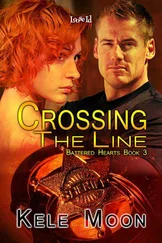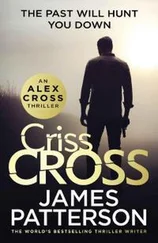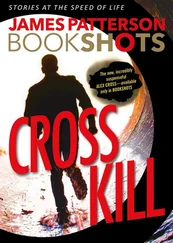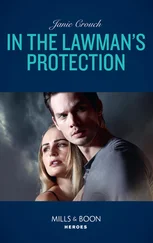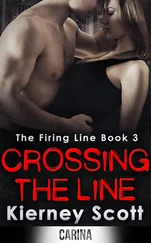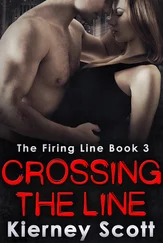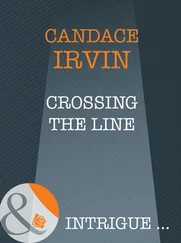Now it was just a matter of executing the plan.
With his sore knee, Brown struggled to keep up, but he soon joined the others strung out along the tree line as they looked across a junky parking lot toward a dark and abandoned machine-tool factory. He listened, heard the purr of gas-fired electric generators, several of them, which was all the evidence you really needed to know that there was more to that relic of a factory than met the eye.
“See them, right there?” Cass whispered. “Two by the door, one on either end? Just like I told you.”
Cass was a big woman in her early thirties with short blond hair, and she was extraordinarily strong from years spent training in CrossFit. She was also one of the most competent and loyal people Brown had ever met. He’d had her scout the machine shop, knowing she’d do the job right.
He turned up the magnification on his night-vision, peered across the lot, and spotted the first two guards. They were lying on mattresses on either side of a double door. A third smoked a cigarette at the far corner. The fourth sat on his haunches at the opposite end of the building.
“Formation is the same,” Brown murmured into his microphone. “Cass and Hobbes, take the center. Price and Fender, the flanks.”
They padded softly toward their prey. The two guards sleeping at the doors didn’t have a chance to stir or make a peep before Cass and Hobbes snapped their necks. And the two watching the corners of the factory had no warning as Price and Fender came up behind them, flipped loops of piano wire over their heads, and crushed their throats.
In the misty August dawn, six patrol cars with lights flashing formed a broad perimeter around an abandoned machine-tool factory in Anacostia. Despite the early hour, small groups of people were standing outside on stoops and sidewalks, peering at the old brick building as if it were some cursed place.
Bree, Sampson, and I had responded because we were closest, and we found the two patrolmen who’d made the discovery shaken.
They laid out the situation, which began with an anonymous call to 911 and ended with what they’d found in the old factory.
“We saw enough to fall back and call in the cavalry,” one said.
“You did right,” I said. “Show us.”
The officers led us around the rear of the building. We could hear generators rumbling inside when we turned the corner and saw the first strangled man sprawled ten feet away on gravel and weeds.
The piano wire that had killed him was embedded in his flesh. Early twenties, Hispanic, better than six feet tall and well over two hundred hard pounds, he wore a black wifebeater, baggy denim, expensive Nike basketball shoes, and lots of gold bling.
“Took somebody awful strong to do this,” Bree said.
“You know it,” Sampson said.
I dug through the victim’s front pockets and came up with cash and a vial of pinkish powder.
“Tastes like meth,” I said after dipping a gloved finger into it.
There was something odd about the angle of the dead man’s hips, so I pushed the body forward. Nothing on the ground. But when I lifted the tail of his shirt, there was a 9mm Ruger in a concealed-carry holster at the small of his back.
“He never got the chance to go for his gun,” I said.
“So somebody awful strong and awful sneaky quiet,” Bree said.
There were three other dead men outside the factory. The two by the doors were African American and had suffered broken necks. The one at the far corner was Caucasian and had also been strangled with piano wire. All of them were buff. All of them were armed. Not one of them carried an ID.
“So how did it work?” Sampson asked. “One killer?”
“He’d have to be a ninja or something,” I said. “I’m thinking four.”
“At the same time?” Bree said.
I looked around, saw no lightbulbs in any of the exterior light fixtures.
“At the same time and in the dark,” I said. Then, gesturing toward the steel doors, I asked, “If they were guards, what were they guarding?”
Sampson went to the near door, turned the knob, and pushed. The door creaked open. We got out Maglites and, pistols drawn, entered the abandoned factory. I led, my beam flickering down the cement-floored hall to swinging double doors, which I pushed through.
Big machine tools had once occupied the large open space. You could see the outlines of them on the floors beneath a film of grit and dust; you could smell the oil of them in the air. There was also a faint smell of engine exhaust.
Pigeons flew through broken windows two stories above us. The sun was starting to light up the area, but I kept the flash-light on, peering around, seeing that about halfway across the factory, the vault met the walls of a second story. In the space below that upper floor, there were two large gas-fired electrical generators idling, the source of that exhaust smell.
“No one move,” Bree said.
I turned and found her studying the factory floor. She scuffed at the grime with the toe of her shoe and then turned her light back the way we’d come.
“We’re leaving footprints here,” she said. “But not back in the hallway. It’s been swept. Maybe mopped.”
I got what she was saying and trained my flashlight on the floor by the double doors. The floor there was clean as well. On either side of the doors, there was a cleaned path about twenty inches wide that ran the length of the room tight to the wall; each ended at a steel industrial staircase.
We didn’t need the flashlights to see that the stairs climbed to two catwalks and that the catwalks led to doors, one at either end of the second story. We walked along the left path, our flashlight beams finding mounds of junk, old pipes, conduits, and metal fittings, all coated in filth.
But the steel staircases looked freshly swept. The catwalk too.
One door was ajar, and I could see light shining beyond.
“Alex?” Sampson said. He’d stopped on the catwalk behind me and was shining his light down at the factory floor and onto a fifth dead man sprawled on his belly there.
“He’s been shot in the head,” Bree said, focusing her beam on the nasty exit wound at the back of his skull. “I’m calling in a second forensics team.”
“Smart,” I said, shifting my attention to the open doorway. I moved closer and pushed the door inward, revealing a short passage that was blocked from floor to ceiling and wall to wall with black, heavy-gauge plastic sheeting.
There was an industrial-strength vertical zipper in the sheeting and two small square windows through which light was blazing. I stepped up, looked through one of the windows, and felt my stomach fall twenty stories.
“Alex?” Bree said from behind me. “What is that?”
“An air lock,” I said, twisting away from the window.
She must have caught the shock on my face, said, “What?”
“Call in two more forensics teams,” I replied, hearing the tremor in my voice. “Better yet, call the FBI, Ned Mahoney. Tell him we need a team of the best from Quantico. And have them bring chemists and hazmat suits.”
By the time my old friend and partner Ned Mahoney and two FBI chemists arrived, there were news satellite trucks setting up and news helicopters circling overhead.
I was on the phone with Chief Michaels, having just given him an overview of what we’d seen inside.
“Jesus,” he said. “The FBI will take this over, won’t they?”
“Not yet,” I said. “Which brings me to your question from last night.”
“Okay?”
“I’m honored, but my place is in the field, and right now it’s inside this factory.”
“Goddamn it, Cross, I need someone managing my detectives.”
Читать дальше

